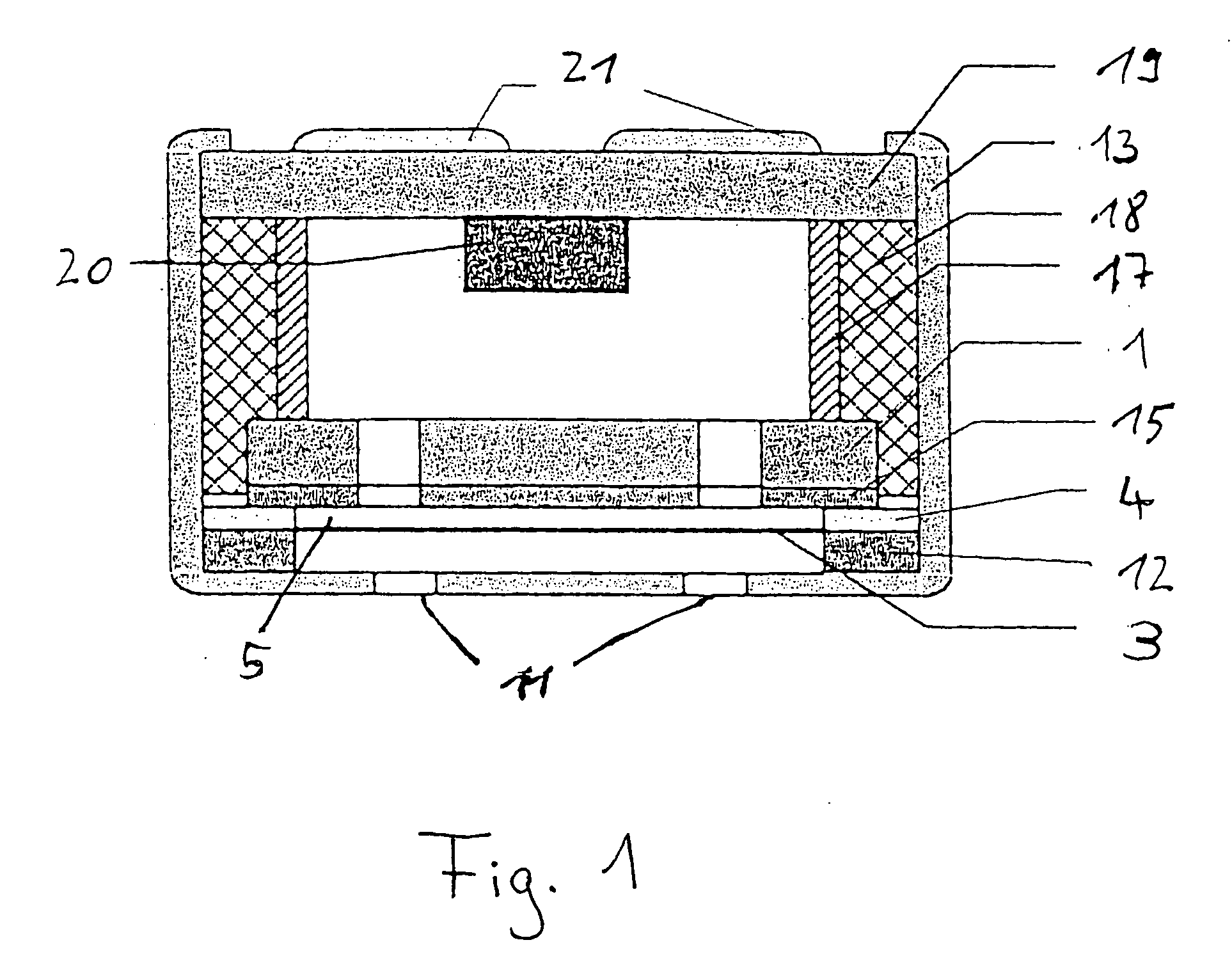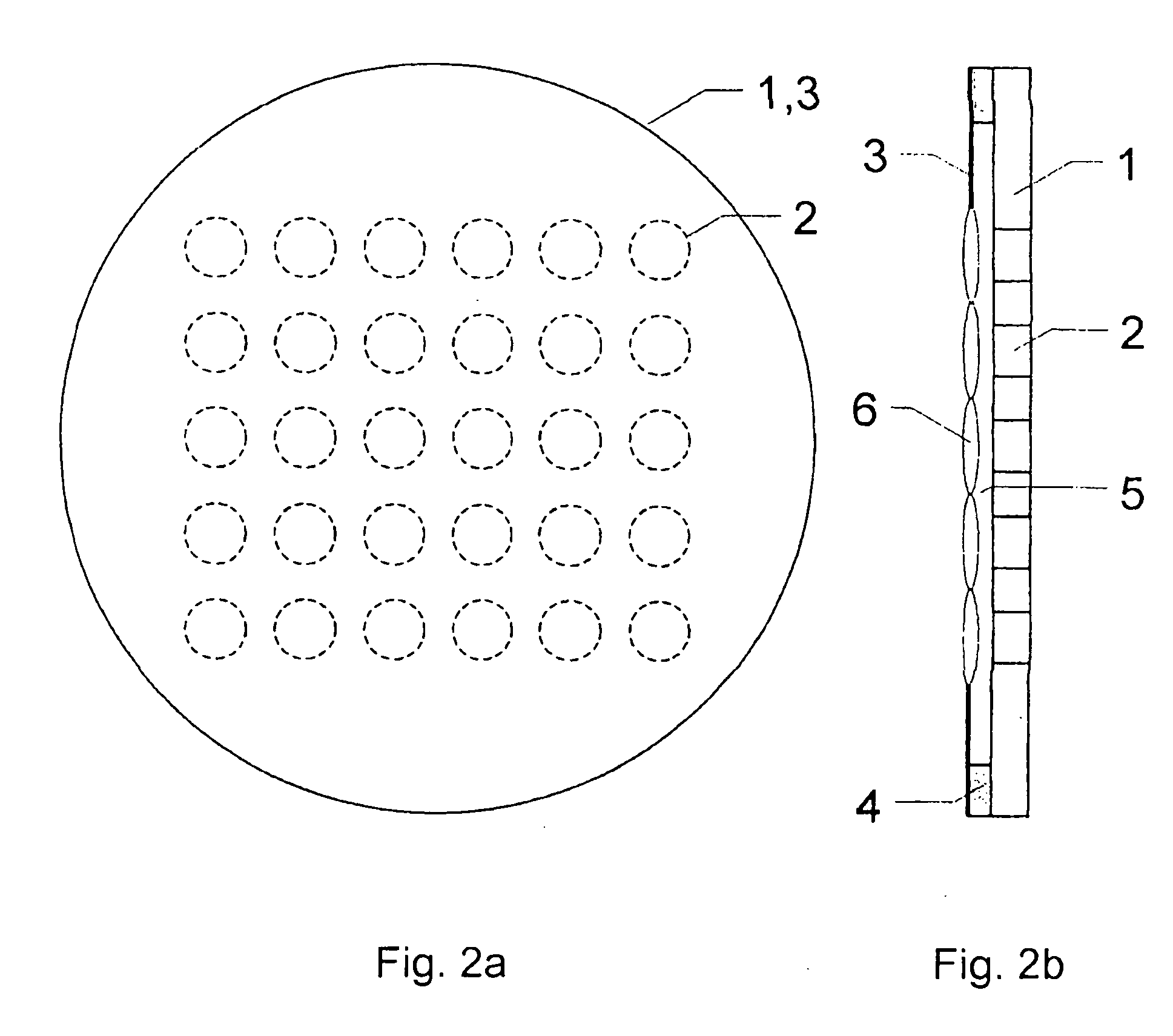Capacitve Sound Transducer Having a Perforated Attenuation Disk
- Summary
- Abstract
- Description
- Claims
- Application Information
AI Technical Summary
Benefits of technology
Problems solved by technology
Method used
Image
Examples
first embodiment
[0052]FIG. 3a and FIG. 3b show, analogously to FIG. 2a and FIG. 2b, the substantially modified elements of a capacitive sound transducer according to the invention. An additional attenuation disk 7 having perforations 8 (unbroken lines) is disposed in front of diaphragm 3. The two sets of perforations 2, 8 are offset in relation to each other in such a way that there is nowhere where they overlap. A spacer 9 similar to spacer 4 determines the distance between attenuation disk 7 and diaphragm 3, thus forming an second air gap 10. This results in diaphragm 3 being attenuated over its entire area by an air gap 5 and / or an air gap 10, that is to say, by at least one non-perforated region. In this way, the natural oscillations 6 of diaphragm 3 are efficaciously suppressed.
[0053]In the embodiment shown in FIG. 3a and FIG. 3b, first perforations 2 and second perforations 8 are offset from each other in such a way that perforated regions of the counterelectrode 1 lie opposite non-perforated...
second embodiment
[0054]FIG. 4 shows an example of a second embodiment according to the invention, in which perforation set 8 of attenuation disk-7 partially overlaps perforation set 2 of the counterelectrode 1 and in which perforation sets 2, 8 are arranged in rows. The first perforation set 2 and the second perforation set 8 are offset from each other in such a way that perforated regions of counterelectrode 1 each lie opposite a part of a first perforated region of attenuation disk-7 and at least one part of a second perforated region of attenuation disk-7. In this case also, efficacious attenuation of diaphragm 3 is achieved when the overlap is mainly in the edge regions of the perforations, with the result that sufficiently large attenuating areas of counterelectrode 1 and attenuation disk-7, respectively, particularly in the middle regions of the partial diaphragms, lie opposite the diaphragm, also in the perforated regions of perforation sets 2 and 8.
[0055]FIG. 5 shows an example of a third po...
PUM
 Login to view more
Login to view more Abstract
Description
Claims
Application Information
 Login to view more
Login to view more - R&D Engineer
- R&D Manager
- IP Professional
- Industry Leading Data Capabilities
- Powerful AI technology
- Patent DNA Extraction
Browse by: Latest US Patents, China's latest patents, Technical Efficacy Thesaurus, Application Domain, Technology Topic.
© 2024 PatSnap. All rights reserved.Legal|Privacy policy|Modern Slavery Act Transparency Statement|Sitemap



